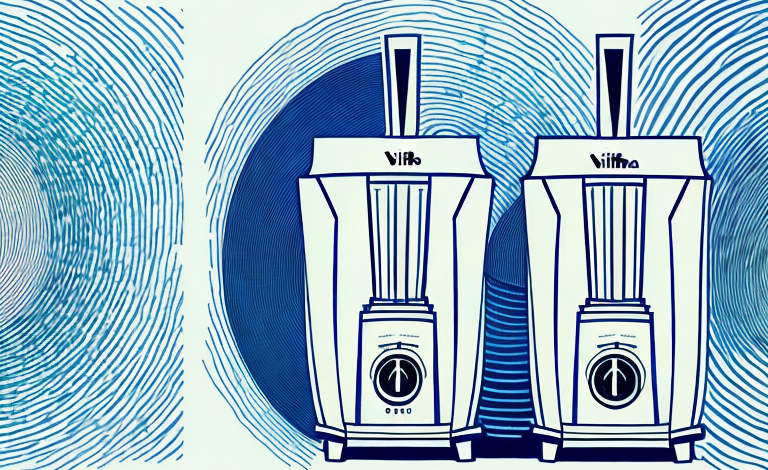Fingerprints, also known as dermatoglyphs, have been used as a means of identification for centuries due to their uniqueness. But is it true that every individual has a unique set of fingerprints? Let’s explore this question in depth.
What are fingerprints and how are they formed?
Fingerprints are the ridges, whorls, and lines on the surface of our fingers that result from the interaction between genetics and the environment during fetal development. These patterns are formed by friction ridge skin, which is thicker and more complex than normal skin due to the presence of sweat pores and ridges.
Each person’s fingerprints are unique, even identical twins have different fingerprints. This is because the formation of fingerprints is influenced by various factors such as the pressure and position of the fetus in the womb, the nutrition received by the mother during pregnancy, and the blood flow to the fingers.
Fingerprints have been used for identification purposes for over a century, and they are still widely used today in forensic investigations. The unique patterns on each person’s fingers make it possible to identify individuals with a high degree of accuracy, and fingerprints are often used as evidence in criminal cases.
The science behind fingerprint identification.
Fingerprint identification is based on the unique characteristics of individual ridge patterns, which are classified into three main categories: loops, whorls, and arches. Using fingerprinting technology, forensic scientists can analyze and compare prints to identify a suspect or match them to a database of known prints.
One of the key advantages of fingerprint identification is its reliability. Unlike other forms of identification, such as DNA analysis or facial recognition, fingerprints are unique to each individual and do not change over time. This makes them a highly accurate and dependable method of identifying suspects or confirming identities.
However, there are also limitations to fingerprint identification. For example, if a person’s fingerprints are not properly recorded or if they have damaged or scarred fingers, it may be difficult or impossible to obtain a clear print. Additionally, there have been cases where fingerprint evidence has been mishandled or misinterpreted, leading to wrongful convictions or acquittals.
Understanding the uniqueness of fingerprints.
While it is widely believed that fingerprints are unique to each individual, there is still much debate among scientists. Some argue that the complexity and variability of ridge patterns mean that no two sets of prints can be identical, while others suggest that identical twins may have the same fingerprints. However, it is generally accepted that the probability of two individuals having the same prints is incredibly low.
One interesting fact about fingerprints is that they are not determined by genetics alone. While genetics play a role in determining the overall pattern of ridges, environmental factors such as pressure and movement in the womb can also affect the final outcome. This means that even identical twins, who share the same genetic code, may have slight variations in their fingerprints due to differences in their prenatal environment.
How reliable is fingerprint identification?
Despite the general reliability of fingerprint identification, there have been cases of erroneous identifications due to human error, database inaccuracies, or deliberate tampering. In recent years, advancements in technology have increased the accuracy and reliability of fingerprint identification.
One of the major challenges in fingerprint identification is the quality of the fingerprint itself. Poor quality prints, such as those obtained from a crime scene, can be difficult to match accurately. Additionally, certain medical conditions or occupations that involve frequent use of the hands can alter the appearance of fingerprints, making them more difficult to identify.
Despite these challenges, fingerprint identification remains one of the most reliable methods of identification. It is widely used in law enforcement, border control, and other security applications. In fact, many countries have implemented biometric passports that use fingerprint identification to verify the identity of travelers.
Historical development of fingerprint identification.
The use of fingerprints as a means of identification dates back to ancient Babylon and China, where prints were used for business transactions and legal documentation. The first scientific study of fingerprints was conducted in the late 19th century by Francis Galton, who established the uniqueness and permanence of prints.
Following Galton’s work, the use of fingerprints for identification purposes became more widespread. In 1892, Sir Edward Henry developed a classification system for fingerprints that is still used today. The first use of fingerprints in a criminal investigation occurred in Argentina in 1892, where a woman was found murdered and her bloody fingerprint was left on a doorpost. The print was matched to the suspect, who was subsequently convicted. Today, fingerprint identification is a widely used tool in law enforcement and other fields, such as border control and access control for secure facilities.
Similarities and differences in fingerprints between identical twins.
While identical twins share the same DNA, their fingerprints may still differ due to variations in fetal development and environmental factors. Studies suggest that identical twins have very similar prints, but not identical.
One interesting fact is that fingerprints are not only unique to humans, but also to other primates such as gorillas and chimpanzees. However, the patterns and ridges on their fingerprints are different from those of humans.
In forensic science, fingerprints are often used as evidence in criminal investigations. However, it is important to note that fingerprints can be altered or disguised through various methods such as surgery, burns, or even using substances like glue or tape. Therefore, fingerprint analysis should always be used in conjunction with other forms of evidence to ensure accuracy in criminal investigations.
Can fingerprints change over time?
Fingerprints are generally considered to be permanent, but they can be altered by injury, scarring, or certain medical conditions. However, the chances of a person’s prints changing enough to affect identification are relatively low.
It is important to note that fingerprints can also be affected by environmental factors such as prolonged exposure to water or chemicals. For example, individuals who work in jobs that require frequent hand washing or exposure to chemicals may experience changes in their fingerprints over time.
Advancements in technology have also made it possible to detect and analyze even the smallest changes in fingerprints. This has led to the development of new techniques for identifying individuals based on their fingerprints, such as using 3D imaging or analyzing the chemical composition of the prints.
Fingerprinting technology: methods, tools, and techniques.
Fingerprinting technology has evolved significantly in recent years, with advancements in digital imaging, biometric databases, and forensic analysis techniques. Common methods include inked prints, live scans, and latent prints, which may use chemical or light sources to enhance visibility.
In addition to traditional fingerprinting methods, new technologies have emerged that allow for more accurate and efficient identification. One such technology is 3D fingerprinting, which captures a three-dimensional image of the fingerprint and can detect even the smallest details. Another emerging technology is thermal imaging, which uses heat signatures to create a unique fingerprint profile.
Fingerprinting technology is not only used in law enforcement and forensics, but also in other industries such as healthcare and finance. In healthcare, fingerprints are used for patient identification and to prevent medical identity theft. In finance, fingerprints are used for secure authentication and to prevent fraud.
Forensic applications of fingerprint identification.
Fingerprint identification is a staple of forensic investigation, used to link suspects to crime scenes or match prints from databases to suspects. It is also used in civil identification, border control, and other security applications.
In addition to its use in criminal investigations, fingerprint identification has also been used in disaster victim identification. After natural disasters or mass casualty events, fingerprints can be used to identify victims and reunite them with their families. This has been particularly useful in cases where traditional identification methods, such as dental records or DNA analysis, are not possible due to the condition of the remains.
Ethical implications of fingerprinting technology.
While fingerprinting technology has many practical uses, there are concerns about the privacy and civil liberties of individuals. Critics argue that the widespread use of biometric data could lead to government surveillance, identity theft, or discrimination.
Furthermore, there are also concerns about the accuracy and reliability of fingerprinting technology. Studies have shown that certain factors, such as age, skin condition, and environmental conditions, can affect the accuracy of fingerprint scans. This raises questions about the potential for false positives or false negatives, which could have serious consequences for individuals who are wrongly identified or excluded from access to certain services or opportunities.
Future trends in fingerprint identification and biometrics.
As technology continues to advance, experts predict further improvements in fingerprinting technology, such as widespread adoption of facial recognition and other biometric technologies.
One of the most promising developments in biometric technology is the use of DNA analysis for identification purposes. DNA analysis can provide a more accurate and reliable method of identification than traditional fingerprinting, as it is unique to each individual and cannot be altered or forged. However, there are still ethical and legal concerns surrounding the use of DNA analysis for identification purposes, and further research and regulation is needed before it can be widely adopted.
Frequently asked questions about fingerprints.
Here are some commonly asked questions about fingerprints:
- Can fingerprints be erased?
- Can a person’s fingerprints be the same on both hands?
- Can animals have fingerprints?
- Are there any other body parts that have unique patterns like fingerprints?
While it is possible to alter or obscure fingerprints through various methods, such as surgery or chemical treatments, it is not possible to completely erase them. Even after alteration, some remnants of the original pattern may still be visible.
Interestingly, fingerprints are not the only unique patterns found on the human body. The iris of the eye, for example, has a distinct pattern that can be used for identification purposes. Additionally, the shape and structure of a person’s ear can also be used as a unique identifier.
Myths and misconceptions about fingerprints debunked.
Contrary to popular belief, running your fingers under hot or cold water does not erase your prints, and wearing gloves does not completely hide your prints. Additionally, it is not true that some people are born without fingerprints.
Another common myth about fingerprints is that they are unique to humans. In fact, many animals, such as koalas and chimpanzees, also have unique fingerprints. However, the patterns and ridges on their prints are different from those of humans.
It is also important to note that while fingerprints are a valuable tool in criminal investigations, they are not foolproof. False positives and false negatives can occur, and human error in collecting and analyzing prints can lead to mistakes. Therefore, fingerprints should always be used in conjunction with other evidence and investigative techniques.
Conclusion: the importance of fingerprinting in modern society.
Fingerprint technology has become an invaluable tool in law enforcement, forensics, and security. While there are concerns about privacy and civil rights, these issues must be weighed against the practical benefits of identification technology. Despite ongoing debates about the uniqueness of fingerprints, it remains clear that they are a highly reliable means of identification and will continue to play a significant role in modern society.



